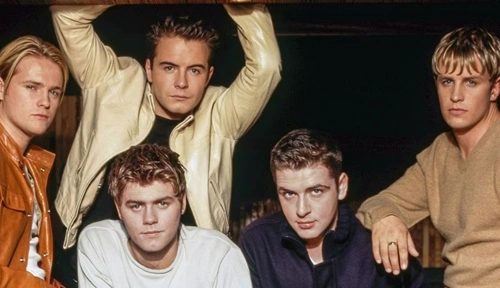Boy bands were once a global phenomenon, dominating the music charts, capturing the hearts of millions, and becoming cultural icons. Groups like the Backstreet Boys, NSYNC, Westlife, and One Direction epitomized the craze, blending catchy melodies, synchronized dance moves, and charismatic personas. However, in recent years, the dominance of boy bands has dwindled. While some groups continue to thrive in specific markets, the era of widespread boy band mania seems to have faded. This begs the question: why did boy bands go extinct?
Let’s explore the reasons behind their decline and how shifts in the music industry and popular culture contributed to this change.
The Golden Age of Boy Bands

Boy bands first gained significant traction in the late 1980s and 1990s, with acts like New Kids on the Block paving the way for global sensations such as NSYNC and the Backstreet Boys. These groups combined feel-good pop music with a mass appeal, often targeting younger audiences, particularly teenage girls.
The formula was simple yet effective: good looks, harmonious vocals, choreographed performances, and emotionally resonant lyrics. Fans bought albums, attended concerts, and plastered posters of their favorite members on bedroom walls.
However, like all trends, the boy band phenomenon was not immune to change. The factors that fueled their rise eventually became the same reasons for their decline.
1. Shifts in Musical Trends
One of the primary reasons for the decline of boy bands is the evolution of music. Pop music itself diversified, incorporating elements from hip-hop, R&B, EDM, and indie genres. Solo artists like Justin Bieber, Ariana Grande, and Billie Eilish became more popular as audiences gravitated toward individuality rather than group dynamics.
Streaming platforms like Spotify and YouTube allowed listeners to explore a wider range of genres, diluting the dominance of pop-heavy boy bands. As musical tastes expanded, the polished, formulaic sound of traditional boy bands became less appealing to modern audiences.
2. Rise of K-Pop
While Western boy bands struggled to maintain their relevance, K-pop groups like BTS, EXO, and Stray Kids emerged as global powerhouses. These groups adopted many elements of the boy band formula but introduced a fresh, innovative approach.
K-pop artists incorporated high-energy performances, multi-genre music, and intense fan engagement via social media. Their success highlighted the inability of Western boy bands to evolve with the times. Fans who might have once been drawn to Western boy bands shifted their attention to K-pop idols, who seemed more dynamic and engaging.
3. Cultural Shifts and Individualism
In the 1990s and early 2000s, the collective image of a boy band worked well because fans often identified with the group as a whole or with a specific member. However, in today’s era of social media and individuality, audiences value unique, personal brands over group identities.
Social media platforms like Instagram, TikTok, and Twitter have given individual artists the power to build direct connections with fans. This cultural shift toward individualism has made the concept of a “group” feel less relevant. Modern listeners prefer to follow and support solo artists who share their personal journeys and stories rather than groups adhering to a generic formula.
4. Overexposure and Saturation
During the peak of boy band mania, the market became oversaturated. Numerous groups emerged, often mimicking successful acts like the Backstreet Boys or NSYNC. This led to fatigue among fans, as the industry recycled the same themes, looks, and sounds.
Additionally, as the industry churned out boy bands, the novelty wore off. Fans started seeking more authenticity and diversity in music, which the repetitive boy band formula struggled to provide.
5. Changing Media Landscape
The way music is marketed and consumed has changed drastically. In the boy band heyday, music videos and interviews on MTV or VH1 played a crucial role in their rise. Today, however, these platforms have been replaced by on-demand streaming and social media.
Boy bands thrived in a centralized media ecosystem where their image could be carefully controlled. In today’s decentralized media landscape, where fans discover music independently through algorithms, the collective appeal of a boy band struggles to resonate.
6. Evolving Fan Expectations
Modern fans demand more from artists in terms of creativity and substance. Boy bands were often criticized for their manufactured image and lack of creative input in their music. While this was accepted in the past, today’s audiences expect artists to write their own songs, explore deeper themes, and present a more authentic image.
Many boy bands of the past relied on external songwriters and producers, which limited their ability to adapt and innovate. This lack of artistic evolution made it difficult for them to compete with contemporary artists who were pushing creative boundaries.
The Legacy of Boy Bands
Despite their decline, boy bands have left a lasting legacy. They redefined pop music, introduced choreographed performances as a staple, and demonstrated the power of fandom in shaping the music industry.
While traditional boy bands may no longer dominate the charts, their influence can still be seen in modern pop music and fandom culture. Groups like BTS and One Direction (before their hiatus) successfully adapted the boy band formula to suit contemporary tastes, proving that while boy bands may not be extinct, their evolution is necessary for survival.
Conclusion
The decline of boy bands can be attributed to changing musical trends, cultural shifts, and the rise of alternative group dynamics like K-pop. While the traditional boy band era has faded, the concept of a group of talented performers capturing hearts worldwide has simply evolved, adapting to new generations and tastes. Boy bands as we knew them may no longer exist, but their spirit lives on in modern adaptations, keeping the legacy alive.



